The Bronco was a model in Ford’s truck range for a few decades starting in the 1960s, with the later versions being as large as full-size pickups with short wheelbases (like the OJ Simpson version). But it was the original generation that debuted over half-a-century ago that appealed the most to off-road enthusiasts, and became iconic over the ensuing decades, as other brands continued to become the vehicles of choice for serious off-road outings.
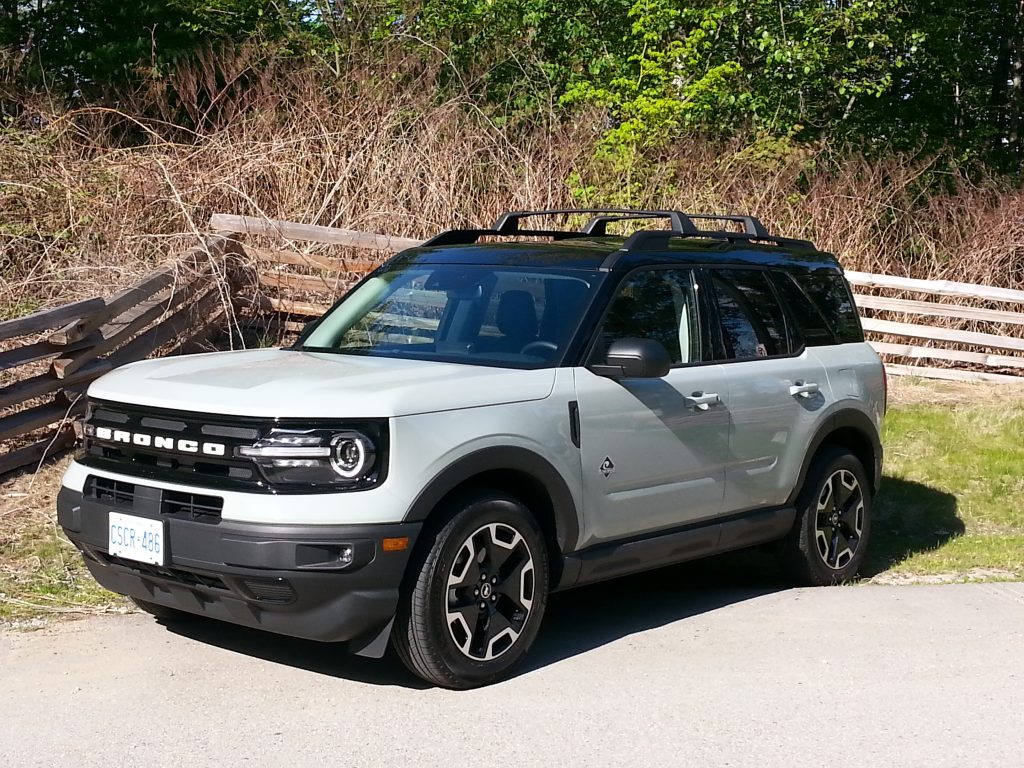
It’s taken Ford this long to resurrect the Bronco name and put it on a modern SUV that can compete with any other such off-road-oriented vehicle. Off the top, we should point out that there are two very distinct versions of the Bronco, with the Sport being the first one to hit the market. Based on the unibody architecture of the Escape, it is more of an everyday, softer-edged Bronco with very useful off-road capabilities for people with an active lifestyle.
The go-anywhere off-road-capable, body-on-frame Bronco built to compete with Jeep Wrangler is beginning to trickle into dealers this summer, but with some 125,000 pre-orders and constricted supply due to Covid and micro-processor shortages, it is essentially sold out for the first two model years.
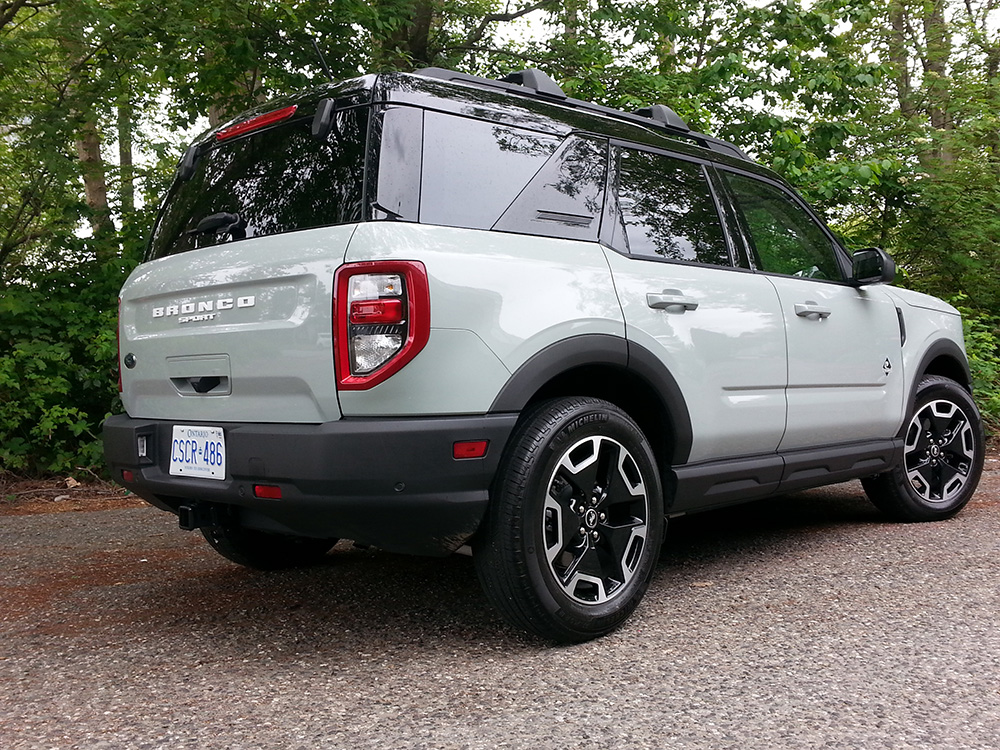
In any case, there are Bronco Sports available now, and the one we tested was the Outer Banks model, one below the top-of-the-line Badlands. Like the base and Big Bend models below it, the Outer Banks is notable for having a 1.5-litre EcoBoost three-cylinder engine, a power unit that Ford has quietly equipped some of its smaller vehicles with the last few years.
‘Quietly,’ because the first thought of some people is to think that anything less than four cylinders is less-than satisfactory. It is still a 1.5-litre turbocharged engine, with much greater bore and stroke dimensions than a similar-size four, so it makes plenty of power – 181 hp and 190 lb-ft of torque at a usefully-low 3,000 rpm. It’s perhaps not quite as refined as a similar small four, but in normal use, you’ll quickly forget any pre-conceived notions you may have had. Should you demand a four, the Badlands comes with the 2.0-litre version, and with 250 hp and 277 lb-ft, the Sport becomes a lot faster – at the cost of fuel consumption.
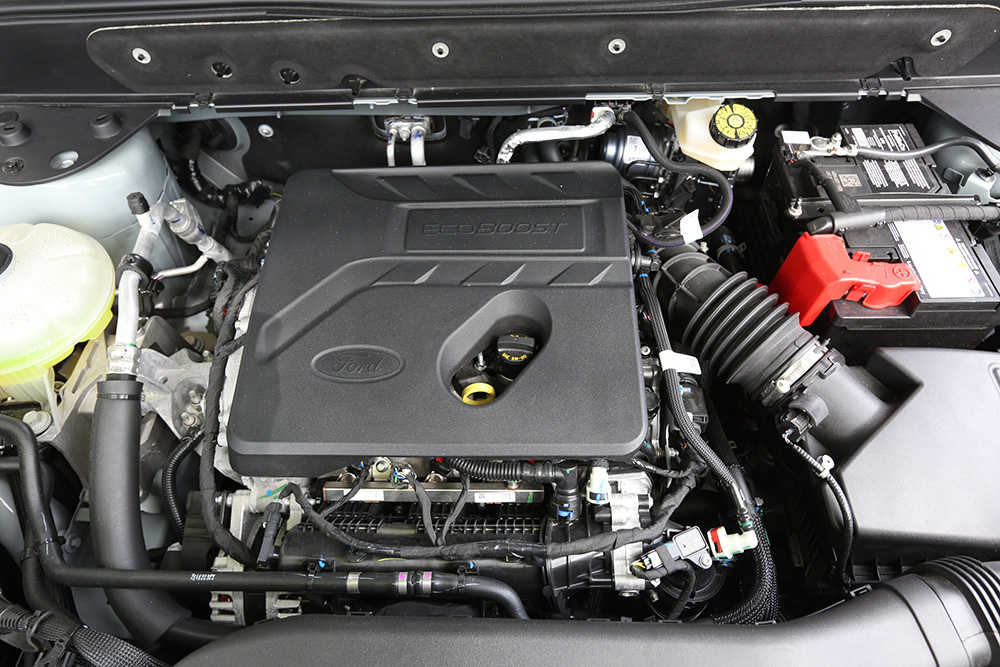
The only transmission available is an eight-speed automatic, and the driver’s sole involvement is to turn the PRNDL knob to D and let the electronics figure out the rest. There is no manual shift capability short of turning the knob to L, to raise the revs.
The power goes from there to the on-demand all-wheel drive system with front-drive bias in normal traction situations. In any other condition with compromised traction, the rear wheels kick in. The driver can choose from among several modes including Normal, Eco, Sport, Slippery and Sand, to optimize the power delivery for the conditions. Having said that, we did not have the opportunity to get any farther off-road than some gravel, so we can’t vouch for the Sport’s off-road prowess, which is said to be capable for the active adventurer.
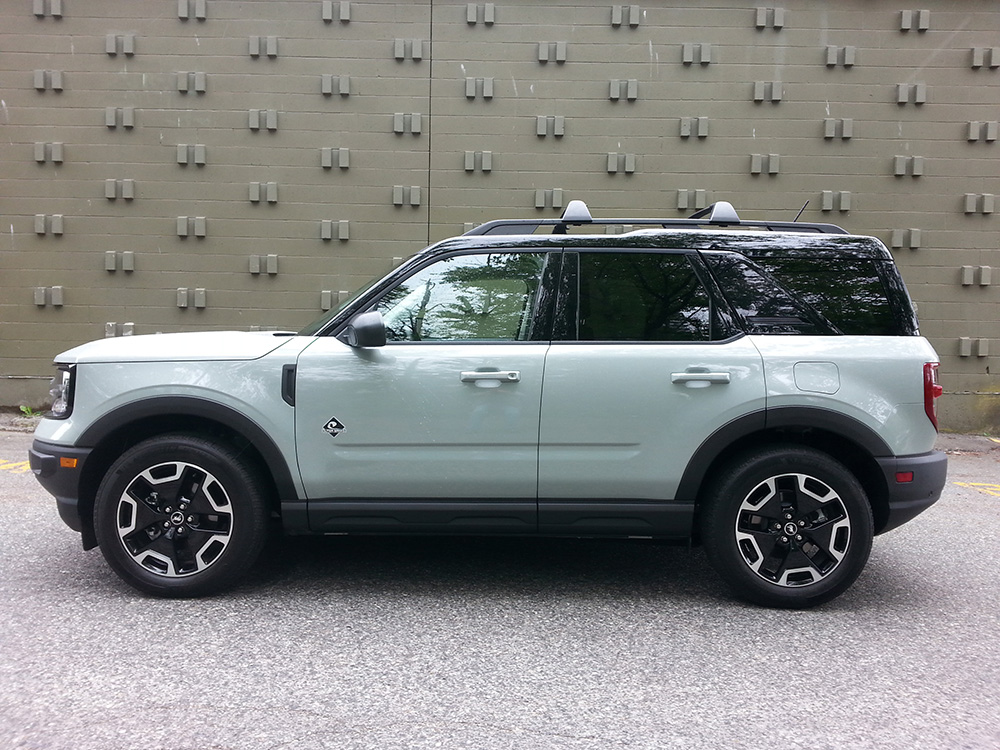
Other than looking retro enough to deserve the Bronco name, the Sport’s main mission in the market is to be the platform around which weekend adventures can be based. And of course, Ford can supply all the attachments for carrying bicycles (including inside the rear cargo area), kayaks, skis, camping equipment, you name it. The available roof rack is even ready to take an overlanding tent on top of it.
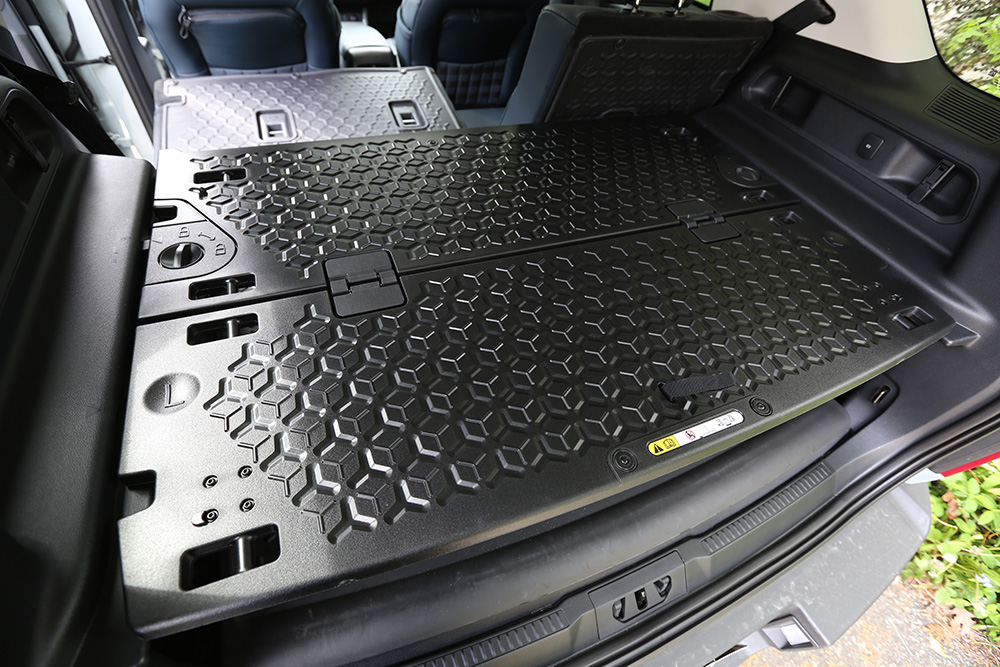
The available Cargo Management System is multi-configurable, featuring a slide-out working table that will take 30 pounds of weight, and that has a ruler moulded right into the plastic. It doubles as a cargo cover, and can be accessed via the flip-up rear window. Available as well is a 400-watt power inverter and flood lights mounted in the liftgate for after-dark utility.
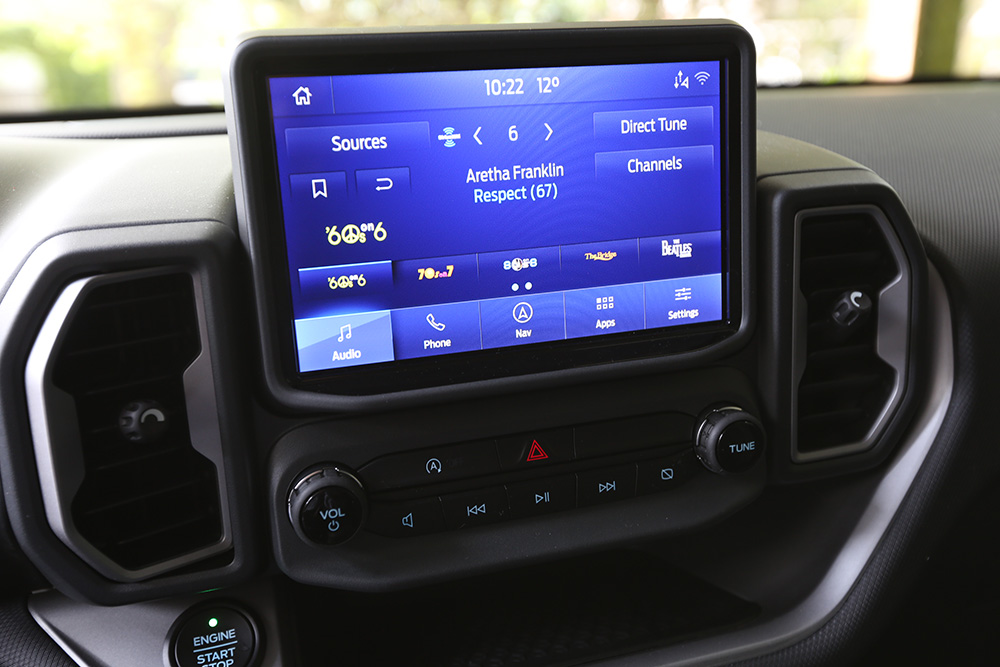
Being the luxury-level model of Bronco Sport, the Outer Banks we drove had the likes of sun roof, navigation, satellite radio and leather trim on the seats and steering wheel. There is also some hard plastic, which befits the “outdoor” nature of the Sport, as it is easily cleaned.
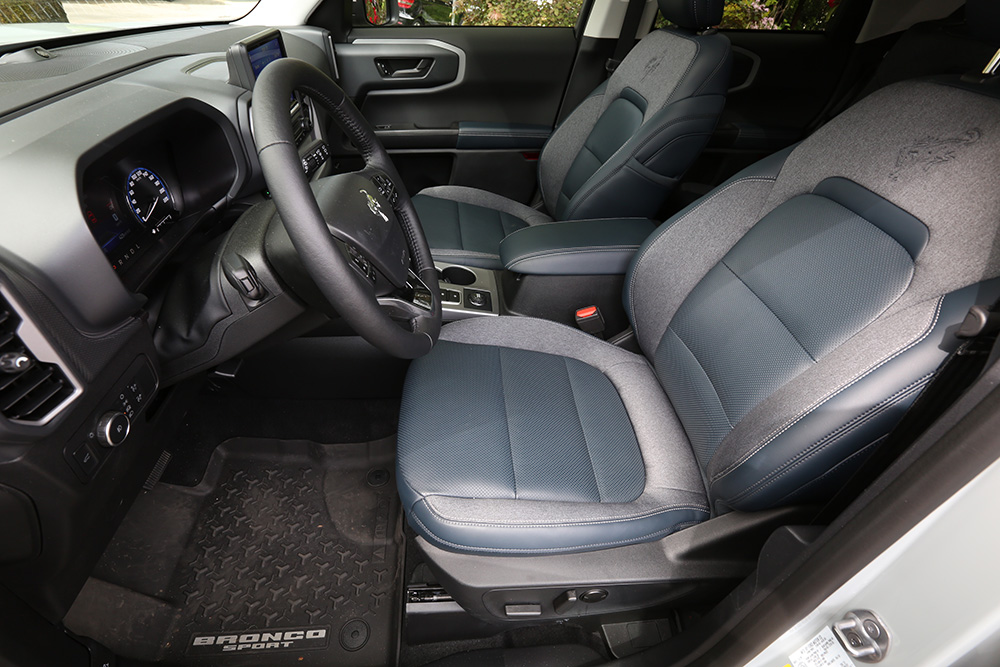
While the front seats are very attractive in their leather-and-felt trim, we must make note that actually sitting in them is somewhat less appealing. Full disclosure – this writer is 6-1 with long legs. Having said that, the seat itself is soft and round underneath your body. Not terribly uncomfortable, but less support than you may want under your thighs, for example. More of a problem, though, was the actual positioning of the seat in the interior. It was simply neither low enough nor far enough to the rear to provide a comfortable driving position. It had electric fore-aft, recline and some lumbar adjust, but its height was just too far off the floor. At full rearward positioning, there were still several inches of room to the back seat, so there was plenty of space for the seat to go back more. If you are a shorter person, this may not be of any consequence to you, but if you are taller and looking at buying one, it is something to consider.
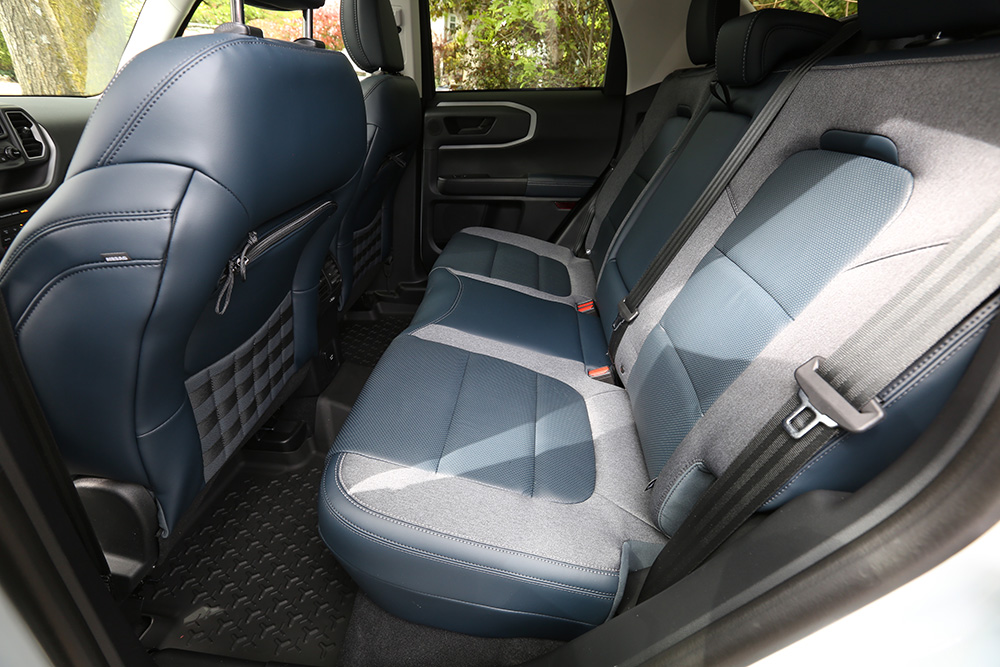
The Outer Banks model is intended to offer more comfort and style than the lower two models, with loose-surface capability and lots of versatility for outdoor adventures. The Badlands ratchets up the off-road capability some more, but the rough-and-ready Bronco to come will be the one that enthusiasts will want, that will take the fight to Jeep and Land Rover.
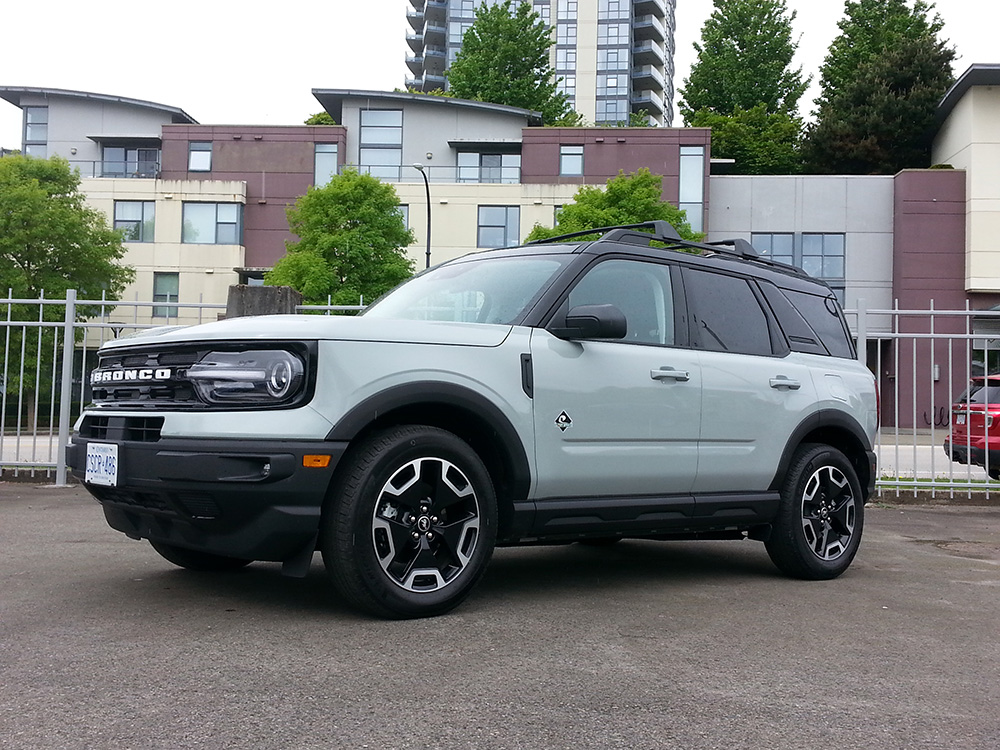
So, essentially, there are three levels of off-road capability across the Bronco range, with two of them currently offered in the Sport, in a less hardcore package than the Bronco to come. If you think you’ll be heading much further off-road than the trail up to the lake, you might want to consider the Badlands model, which comes with a lot of extra equipment ideally suited for going further into the wild, and costs only $2,500 more than the $37,799 MSRP of the Outer Banks.
The Outer Banks has the Bronco design heritage and lots of soft-road capability, and is a luxurious little crossover SUV, equipped as our tester was, that will appeal to the city-dwelling weekend warrior.
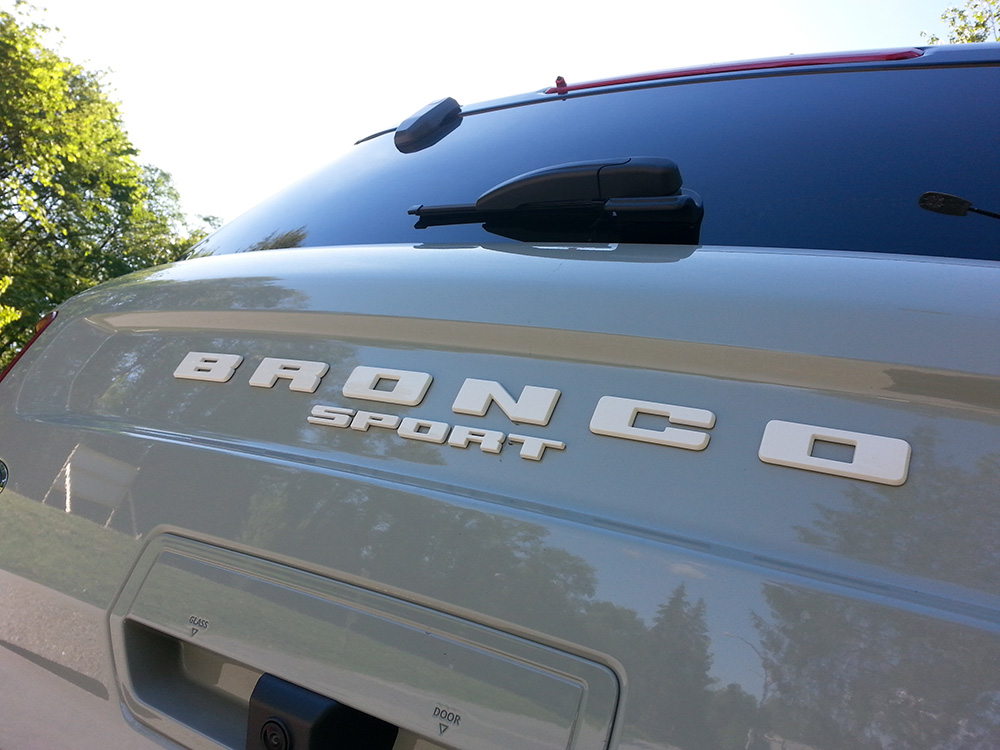
Specifications
- Price as Tested: $37,799
- Vehicle type: 5-passenger Compact SUV
- Engine: 1.5L DOHC turbo I3
- Power: 181 hp
- Torque: 190 lb-ft @ 3.000 rpm
- Drivetrain: All-wheel drive
- Transmission: 8-speed auto
- Max. Trailer Rating: 906 kg / 2,000 lb.
- Curb Weight: 1,568 kg / 3,460 lb.
- Fuel Efficiency Rating: 9.3 / 8.3 L/100 km, city/hwy
- Fuel Efficiency Observed: 11.3L/100 km, city




